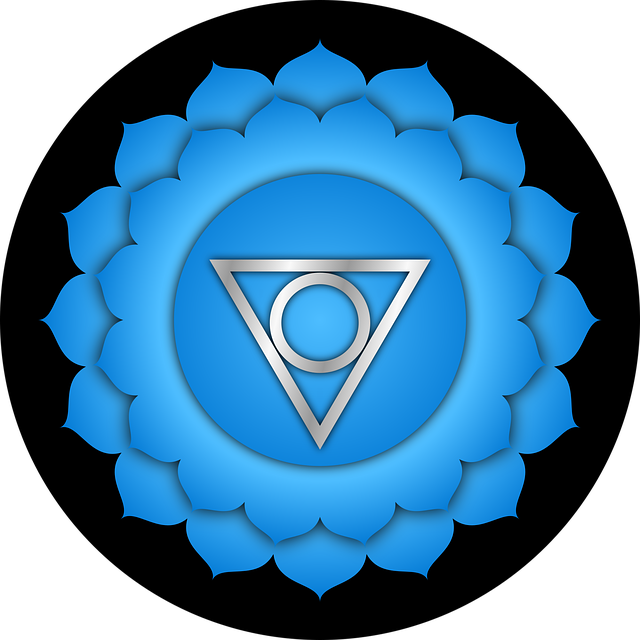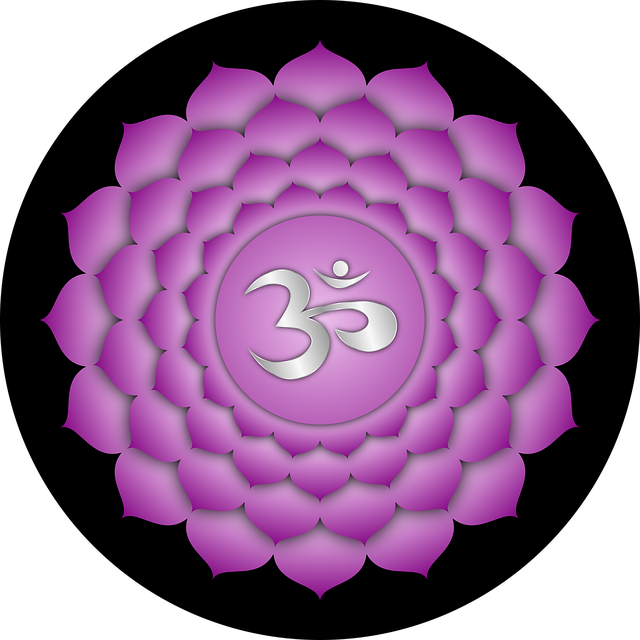The 7 chakras are energy centres in the body that correspond to different physical, emotional, and spiritual aspects of human existence. The concept of chakras originated in ancient Indian spirituality and is widely practised in Hinduism, Buddhism, and other Eastern traditions. Today, we’re going to look at each one in depth.
As with some of my other posts, there may seem to be some repetition in the different sections, which isn’t very surprising since each section in this article is about a type of chakra. However, it’s important to remember that each repeated subsection is for a different section. So, please don’t skip anything as there may be unique points in those subsections pertaining to the specific section.
Let’s just do a quick summary of each chakra so you have a better idea of how each of the 7 chakras works.
Summary of the 7 Chakras

1. Root Chakra (Muladhara)
The root chakra is the first of the 7 chakras. It is at the base of the spine and is to do with the physical body and survival needs. Its colour is red, and it is related to the element of earth. A balanced root chakra promotes feelings of safety, stability, and groundedness.
2. Sacral Chakra (Svadhisthana)
The sacral chakra is the second of the 7 chakras. It is in the lower abdomen and is to do with sexuality, creativity, and emotions. Its colour is orange, and it is related to the element of water. A balanced sacral chakra promotes healthy sexuality, creativity, and emotional stability.
3. Solar Plexus Chakra (Manipura)
The solar plexus chakra is the third of the 7 chakras. It is in the upper abdomen and is to do with personal power, self-esteem, and willpower. Its colour is yellow, and it is related to the element of fire. A balanced solar plexus chakra promotes confidence, self-esteem, and assertiveness.
4. Heart Chakra (Anahata)
The heart chakra is the fourth of the 7 chakras. It is in the centre of the chest and is to do with love, compassion, and connection. Its colour is green, and it is related to the element of air. A balanced heart chakra promotes feelings of love, empathy, and compassion for oneself and others.
5. Throat Chakra (Vishuddha)
The throat chakra is the fifth of the 7 chakras. It is in the throat and is to do with communication, self-expression, and creativity. Its colour is blue, and it is related to the element of sound. A balanced throat chakra promotes effective communication, self-expression, and creativity.
6. Third Eye Chakra (Ajna)
The third eye chakra is the sixth of the 7 chakras and is in the centre of the forehead and is to do with intuition, perception, and spiritual insight. Its colour is indigo, and it is related to the element of light. A balanced third eye chakra promotes clarity, intuition, and spiritual insight.
7. Crown Chakra (Sahasrara)
The crown chakra is the seventh of the 7 chakras. It is at the top of the head and is to do with consciousness, spirituality, and higher states of awareness. Its colour is violet or white, and it is related to the element of thought. A balanced crown chakra promotes spiritual awakening, inner peace, and connection to a higher power.
The 7 Chakras
So, that was the 7 chakras in brief. Now, as promised, let’s have a more in-depth look at what colour each chakra is, where it is, and what it does. We’re going to start with the Root Chakra, or Muladhara chakra.
7 Chakras – The Root Chakra

The root chakra, also known as the Muladhara chakra, is the first of the 7 chakras in the body. Located at the base of the spine, the root chakra is to do with the physical body, survival needs, and the feeling of being grounded.
The root chakra is symbolised by the colour red and is related to the element of earth. It is the foundation of the chakra system, as it governs our connection to the physical world and helps us feel secure and grounded. With the root chakra in balance, we feel a sense of safety, stability, and belonging in the world.
When the root chakra is imbalanced, it can manifest in physical and emotional symptoms. Physical symptoms of an imbalanced root chakra can include lower back pain, constipation, and immune system issues. Emotionally, an imbalanced root chakra can cause feelings of fear, anxiety, and disconnection from the physical world.
Working on Balancing Your Root Chakra
To balance the root chakra, there are several practices that can be helpful. Here are some ways to work on balancing the root chakra:
- Grounding exercises: Spend time in nature, walk barefoot on the earth, or practice visualisation exercises that involve imagining roots growing from your feet into the ground.
- Yoga poses: Poses such as mountain pose, warrior I, and child’s pose can help activate and balance the root chakra.
- Meditation: Focus on the area at the base of the spine and imagine a red light glowing at the base of the spine.
- Affirmations: Use positive affirmations such as “I am safe and secure” or “I am grounded and connected to the earth.”
- Aromatherapy: Essential oils such as patchouli, sandalwood, and cedarwood can help balance the root chakra.
In summary, the root chakra is the foundation of the chakra system and governs our connection to the physical world. Balancing the root chakra can help us feel safe, stable, and grounded in our daily lives. By practising grounding exercises, yoga poses, meditation, affirmations, and aromatherapy, we can work on balancing the root chakra and promoting overall physical and emotional well-being.
7 Chakras – The Sacral Chakra


The sacral chakra, also known as the Svadhisthana chakra, is the second of the 7 chakras in the body. Located in the lower abdomen, just below the navel, the sacral chakra is to do with creativity, sexuality, and emotional balance.
The sacral chakra is symbolised by the colour orange and is related to the element of water. It is the centre of our emotional and sexual energy. With the sacral chakra in balance, we feel confident, creative, and connected to our emotions and desires.
When the sacral chakra is imbalanced, it can manifest in physical and emotional symptoms. Physical symptoms of an imbalanced sacral chakra can include menstrual problems, lower back pain, and urinary tract infections. Emotionally, an imbalanced sacral chakra can cause feelings of guilt, shame, and a disconnection from our emotions and sexuality.
Working on Balancing Your Sacral Chakra
To balance the sacral chakra, there are several practices that can be helpful. Here are some ways to work on balancing the sacral chakra:
- Creative expression: Engage in creative activities such as painting, dancing, or writing to stimulate your creative energy.
- Yoga poses: Poses such as pigeon pose, seated forward fold, and cow face pose can help activate and balance the sacral chakra.
- Meditation: Focus on the area just below the navel and imagine a bright, vibrant orange light radiating from this area.
- Emotional release: Practise expressing your emotions in a healthy way through journaling, therapy, or talking with a trusted friend.
- Aromatherapy: Essential oils such as ylang-ylang, sandalwood, and jasmine can help balance the sacral chakra.
To summarise, the sacral chakra is the centre of our emotional and sexual energy and when balanced, can help us feel confident, creative, and connected to our desires. By practising creative expression, yoga poses, meditation, emotional release, and aromatherapy, we can work on balancing the sacral chakra and promoting overall physical and emotional well-being.
7 Chakras – The Solar Plexus Chakra


The Solar Plexus Chakra, also known as the Manipura chakra, is the third of the 7 chakras in the body. It is located in the upper abdomen, around the stomach area, and is associated with personal power, self-esteem, and confidence.
The Solar Plexus Chakra is symbolised by the colour yellow and is related to the element of fire. It is the centre of our willpower, motivation, and ambition. With the Solar Plexus Chakra in balance, we feel confident in our abilities and have a strong sense of self-worth.
When the Solar Plexus Chakra is imbalanced, it can manifest in physical and emotional symptoms. Physical symptoms of an imbalanced Solar Plexus Chakra can include digestive issues, liver and pancreas problems, and adrenal gland disorders. Emotionally, an imbalanced Solar Plexus Chakra can cause feelings of low self-esteem, lack of confidence, and a sense of powerlessness.
Working on Balancing Your Solar Plexus Chakra
To balance the Solar Plexus Chakra, there are several practices that can be helpful. Here are some ways to work on balancing the Solar Plexus Chakra:
- Positive affirmations: Use positive affirmations such as “I am confident” or “I trust my intuition” to promote positive self-talk and build self-esteem.
- Yoga poses: Poses such as boat pose, warrior III, and plank pose can help activate and balance the Solar Plexus Chakra.
- Meditation: Focus on the area around the stomach and imagine a bright, vibrant yellow light radiating from this area.
- Healthy eating: Incorporate foods that are yellow in colour, such as bananas, corn, and yellow peppers, into your diet.
- Exercise: Engage in physical activity to boost your confidence and promote overall well-being.
To paraphrase, the Solar Plexus Chakra is the centre of our personal power, self-esteem, and confidence. By practising positive affirmations, yoga poses, meditation, healthy eating, and exercise, we can work on balancing the Solar Plexus Chakra and promoting overall physical and emotional well-being.
7 Chakras – The Heart Chakra


The Heart Chakra, also known as the Anahata chakra, is the fourth of the 7 chakras in the body. It is located in the centre of the chest and is associated with love, compassion, and emotional balance.
The Heart Chakra is symbolised by the colour green and is related to the element of air. It is the centre of our emotional and spiritual well-being. With the Heart Chakra in balance, we feel open to love, connected to others, and in touch with our inner wisdom.
When the Heart Chakra is imbalanced, it can manifest in physical and emotional symptoms. Physical symptoms of an imbalanced Heart Chakra can include heart and lung problems, asthma, and high blood pressure. Emotionally, an imbalanced Heart Chakra can cause feelings of loneliness, isolation, and a lack of empathy for others.
Working on Balancing Your Heart Chakra
To balance the Heart Chakra, there are several practices that can be helpful. Here are some ways to work on balancing the Heart Chakra:
- Practice gratitude: Focus on the things in your life that you are grateful for, and express gratitude to others.
- Yoga poses: Poses such as camel pose, bridge pose, and cobra pose can help activate and balance the Heart Chakra.
- Meditation: Focus on the centre of your chest and imagine a bright, vibrant green light radiating from this area.
- Loving-kindness meditation: Practise sending love and compassion to yourself and others through loving-kindness meditation.
- Surround yourself with nature: Spend time in nature, whether it’s taking a walk in the park or hiking in the mountains, to connect with the natural world and promote feelings of love and compassion.
So, the Heart Chakra is the centre of our emotional and spiritual well-being and is to do with love, compassion, and emotional balance. By practising gratitude, yoga poses, meditation, loving-kindness meditation, and spending time in nature, we can work on balancing the Heart Chakra and promoting overall physical and emotional well-being.
7 Chakras – The Throat Chakra


The Throat Chakra, also known as the Vishuddha chakra, is the fifth of the 7 chakras in the body. It is located in the throat area and is associated with communication, self-expression, and creativity.
The Throat Chakra is symbolised by the colour blue and is related to the element of sound. It is the centre of our communication and self-expression. With the Throat Chakra in balance, we feel confident in expressing ourselves and communicating with others.
When the Throat Chakra is imbalanced, it can manifest in physical and emotional symptoms. Physical symptoms of an imbalanced Throat Chakra can include throat and neck problems, thyroid imbalances, and hearing problems. Emotionally, an imbalanced Throat Chakra can cause feelings of frustration, anxiety, and difficulty in expressing oneself.
Working on Balancing Your Throat Chakra
To balance the Throat Chakra, there are several practices that can be helpful. Here are some ways to work on balancing the Throat Chakra:
- Speak your truth: Be honest and open in your communication with others, and express your thoughts and feelings.
- Singing: Singing can help activate and balance the Throat Chakra and promote feelings of self-expression and creativity.
- Yoga poses: Poses such as fish pose, shoulder stand, and plough pose can help activate and balance the Throat Chakra.
- Visualisation: Imagine a bright, vibrant blue light radiating from your throat area, and visualise yourself expressing yourself confidently and creatively.
- Journaling: Write down your thoughts and feelings in a journal, allowing yourself to freely express yourself and release any emotions that may be blocking your communication.
In summary, the Throat Chakra is the centre of our communication and self-expression. It is to do with creativity and self-confidence. By practising speaking our truth, singing, yoga poses, visualisation, and journaling, we can work on balancing the Throat Chakra and promoting overall physical and emotional well-being.
7 Chakras – The Third Eye Chakra


The Third Eye Chakra, also known as the Ajna chakra, is the sixth of the 7 chakras in the body. It is located in the centre of the forehead, between the eyebrows, and is associated with intuition, wisdom, and spiritual insight.
The Third Eye Chakra is symbolised by the colour indigo and is related to the element of light. It is the centre of our intuition and spiritual awareness. With the Third Eye Chakra in balance, we feel connected to our inner wisdom and have a sense of clarity and purpose.
When the Third Eye Chakra is imbalanced, it can manifest in physical and emotional symptoms. Physical symptoms of an imbalanced Third Eye Chakra can include headaches, eye problems, and neurological disorders. Emotionally, an imbalanced Third Eye Chakra can cause feelings of confusion, anxiety, and a lack of clarity.
Working on Balancing Your Third Eye Chakra
To balance the Third Eye Chakra, there are several practices that can be helpful. Here are some ways to work on balancing the Third Eye Chakra:
- Meditation: Focus on the centre of your forehead and imagine a bright, vibrant indigo light radiating from this area.
- Visualisation: Visualise yourself tapping into your intuition and inner wisdom, and trust your instincts.
- Yoga poses: Poses such as child’s pose, eagle pose, and tree pose can help activate and balance the Third Eye Chakra.
- Spend time in nature: Spend time in nature to connect with the natural world and promote feelings of clarity and intuition.
- Practice mindfulness: Practice being present in the moment and aware of your thoughts and feelings, allowing yourself to connect with your inner wisdom.
To paraphrase, the Third Eye Chakra is the centre of our intuition and spiritual awareness. It is to do with wisdom and clarity. By practising meditation, visualisation, yoga poses, spending time in nature, and practising mindfulness, we can work on balancing the Third Eye Chakra and promoting overall physical and emotional well-being.
7 Chakras – The Crown Chakra


The Crown Chakra, also known as the Sahasrara chakra, is the seventh and final chakra of the c. It is located at the top of the head and is associated with spirituality, consciousness, and enlightenment.
The Crown Chakra is symbolised by the colour violet or white and is related to the element of thought. It is the centre of our connection to the divine. With the Crown Chakra in balance, we feel a sense of peace, oneness, and spiritual fulfilment.
When the Crown Chakra is imbalanced, it can manifest in physical and emotional symptoms. Physical symptoms of an imbalanced Crown Chakra can include headaches, migraines, and neurological disorders. Emotionally, an imbalanced Crown Chakra can cause feelings of disconnection, confusion, and a lack of purpose.
Working on Balancing Your Crown Chakra
To balance the Crown Chakra, there are several practices that can be helpful. Here are some ways to work on balancing the Crown Chakra:
- Meditation: Focus on the top of your head and imagine a bright, vibrant violet or white light radiating from this area.
- Spiritual practices: Engage in practices that promote spiritual growth and connection, such as prayer, yoga, or mindfulness.
- Spend time in silence: Take time to be still and quiet, allowing yourself to connect with your inner wisdom and the divine.
- Connect with nature: Spend time in nature to connect with the natural world and promote feelings of oneness and connection.
- Practice gratitude: Focus on the blessings in your life and cultivate a sense of gratitude, promoting feelings of fulfilment and purpose.
To paraphrase, the Crown Chakra is the centre of our spiritual connection and enlightenment and is to do with a sense of peace, oneness, and fulfilment. By practising meditation, spiritual practices, spending time in silence, connecting with nature, and practising gratitude, we can work on balancing the Crown Chakra and promoting overall physical and emotional well-being.
Wrapping It All Up
In conclusion, the 7 chakras are energy centres in the body that correspond to different physical, emotional, and spiritual aspects of human existence. The seven primary chakras are the root chakra, sacral chakra, solar plexus chakra, heart chakra, throat chakra, third eye chakra, and crown chakra. Each chakra is associated with a specific colour, element, and aspect of human existence. Balancing the chakras can help promote physical, emotional, and spiritual well-being. Meditation, yoga, and other mindfulness practices can help balance the chakras and promote a sense of overall well-being.
When I realised how much having a positive mental attitude started to change my life for the better, I never looked back. If you have never thought about it, or you think that too much of your day is taken up with negativity, please check out our section on positive thinking.
Read More
- The Role of Sugar and Processed Foods in Contributing to Obesity
- How to Ease Anxiety with the Help of Meditation
- Back Problems: the Scourge of Office Work
- Boosting Your Immune System Means Living Your Best Life
- Why Fighting Chronic Stress Is Everybody’s Fight
Disclaimer: The information provided on Healthy Lifestyles for All is intended for general educational purposes only and should not be considered as medical advice. Please consult with your GP or other health professional before making any significant changes to your diet, exercise routine, or any other aspect of your lifestyle. We are not responsible for any adverse effects or consequences resulting from the use of the information provided on our blog.
Comments: I hope you enjoyed reading this post as much as I enjoyed writing it. If you liked it, please leave a comment. If you didn’t like it, disagree with something I have written (I’m okay with that), or think I got something wrong (that’s okay too), please leave a comment as well. We only truly learn from our mistakes, so I am happy to have mine pointed out.
Affiliate Links: Please also note that I may make a small amount of money if you buy one of the products I recommend in any of my blog posts. Rest assured that I have done my own due diligence, and only recommend products that have been tried and tested, and have extremely good feedback. Additionally, many of the products I recommend have 30 or 60-day money-back guarantees, so you can buy in the confidence that if a particular product is not right for you, you can get a refund.





